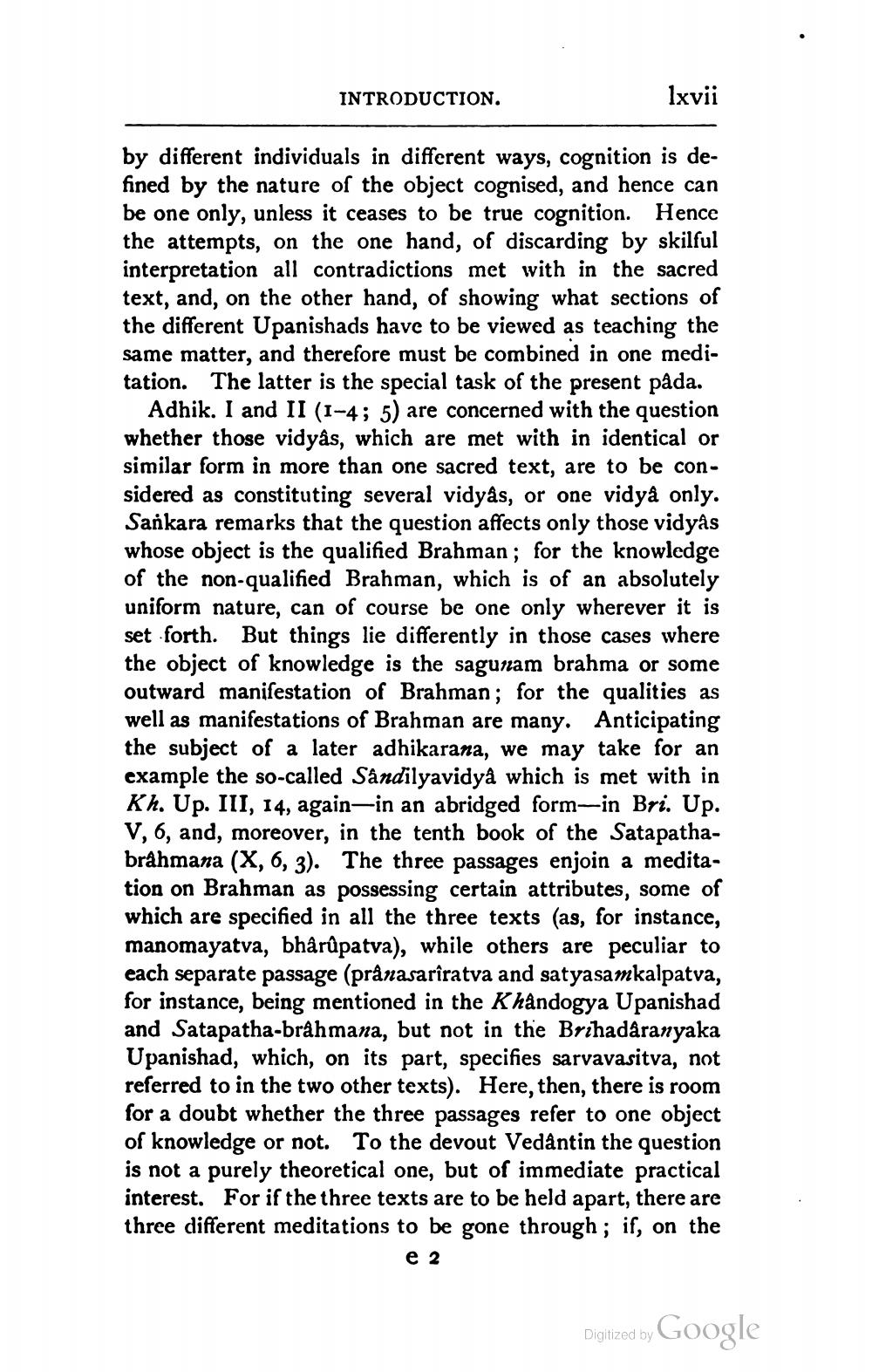________________
INTRODUCTION.
lxvii
by different individuals in different ways, cognition is defined by the nature of the object cognised, and hence can be one only, unless it ceases to be true cognition. Hence the attempts, on the one hand, of discarding by skilful interpretation all contradictions met with in the sacred text, and, on the other hand, of showing what sections of the different Upanishads have to be viewed as teaching the same matter, and therefore must be combined in one meditation. The latter is the special task of the present pada.
Adhik. I and II (1-4; 5) are concerned with the question whether those vidyâs, which are met with in identical or similar form in more than one sacred text, are to be considered as constituting several vidyas, or one vidyà only. Sankara remarks that the question affects only those vidyâs whose object is the qualified Brahman; for the knowledge of the non-qualified Brahman, which is of an absolutely uniform nature, can of course be one only wherever it is set forth. But things lie differently in those cases where the object of knowledge is the sagunam brahma or some outward manifestation of Brahman; for the qualities as well as manifestations of Brahman are many. Anticipating the subject of a later adhikarana, we may take for an example the so-called Sandilyavidyâ which is met with in Kh. Up. III, 14, again-in an abridged form in Bri. Up. V, 6, and, moreover, in the tenth book of the Satapathabrahmana (X, 6, 3). The three passages enjoin a meditation on Brahman as possessing certain attributes, some of which are specified in all the three texts (as, for instance, manomayatva, bhârûpatva), while others are peculiar to each separate passage (pranasarîratva and satyasamkalpatva, for instance, being mentioned in the Khåndogya Upanishad and Satapatha-brahmana, but not in the Brihadåranyaka Upanishad, which, on its part, specifies sarvavasitva, not referred to in the two other texts). Here, then, there is room for a doubt whether the three passages refer to one object of knowledge or not. To the devout Vedantin the question is not a purely theoretical one, but of immediate practical interest. For if the three texts are to be held apart, there are three different meditations to be gone through; if, on the
e 2
Digitized by
Digitized by Google




